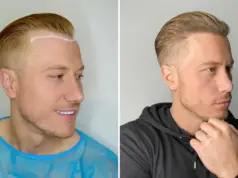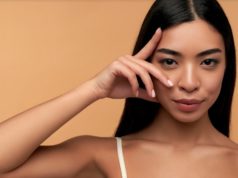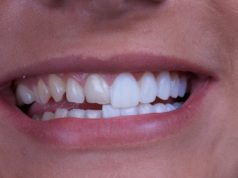There’s a new wave of cosmetic surgery today. And as much as it gains popularity to its recipients, it also gets a fair share of critics as it seems to be movement to deny and to erase one’s ethnicity. But does it really?
Ethnic Plastic Surgery is the practice of changing one’s physical features as supposed to what is typical of your race. For example, Asians, especially, Chinese, Koreans, and Japanese would want to have a blepharoplasty or a surgery which gives a crease in their eyelids—an effort to change their typical monolid eye feature. For African-Americans, they want to reshape their noses and reconstruct by narrowing nostril width and Nose Bridge.
From the 2005 to 2013 data released by the American Society of Plastic Surgeons, the demand for cosmetic surgeries among African-Americans skyrocketed by 56 percent while Asians and Hispanics increased by a whopping 126 percent and 85 percent, respectively.
Rhinoplasty or nose job became the popular procedure for African-Americans, Latinos, Mid-easterners and clients from the Mediterranean. For Asians, blepharoplasty (double eyelid surgery) is one of the top choices.
With this seemingly becoming interesting trend in the world of beauty and cosmetic surgery, certain issues and questions arise such as:
Question no. 1:
“Are they doing this because they just want to enhance their appearance?”
Answer:
“No, they do not suffer from the bondage of “trying to be white or westernized”.
Because of the dominance and popularity of western media (magazines, TV, digital media), it can be assumed that we also make a close link of our beauty ideals to it. Over the years, we have witnessed its evolution. What was considered popular like the curves of Marilyn Monroe in the 50s did not reign through the 90s, came the influx of supermodels like Kate Moss, where ‘thin is IN’. However, fast-forward to 2016 and the plastic surgery industry is booming again for curvier waist and fuller bust from patients who want to ‘keep up with the Kardashians’.
However, although the idea of mind conditioning seem pretty present from the media, the way we compose our ‘own’ standards of beauty is not really tied to a specific ethnicity or race, but on how a particular shape or size of a physical feature contributes to the overall attractiveness of a person. In a beauty survey done by thedailymail.uk, men and women were asked to ‘build up’ what they think is the ideal epitome of beauty. Qualities like fuller lips, strong cheekbones, huge eyes, petite nose and finer brows surfaced out from the survey.
Now, we try to pan our attention to Korea, which ranks as the country with the highest rate of cosmetic and plastic surgery in the world. Among the most popular procedures, still, the double-eyelid surgery is in the top spot. However, it is important to note though, that the reason behind getting this kind of surgery is not because they want to subscribe to Western standards. Koreans try to have bigger eyes with creased eyelids because for them, it turns out that it is more attractive and more youthful to look at.
From an article published through the Korean Herald, Korean surgeon Minhwa Na asserted that she would even get complaints from her clients if the resulted eyelid crease looks like a Caucasian one. Although they want huge set of eyes, they still want to look Asian.
Question no. 2:
“Is this an effort to become more westernized?”
Answer:
No, they just simply want to feel more attractive by enhancement, and not pure imitation of somebody else’s physical feature.
In the highly multicultural United States of America, it can be easily assumed that clients seek to change the shape of their nose or eyes so that assimilation would be easy with the people where western or white beauty ideals remain supreme.
But contrary to the popular assumption, patients just wanted their physical features to be symmetrical and aesthetically pleasing. They simply want to work on what they’ve got to look their best. There are certain proportions that they want to achieve to feel more beautiful.
Question no. 3:
“Do they want to hide their ethnic identity?”
Answer:
No, they do not want to hide nor deny their own ethnicity.
Though the critics have raised a flashpoint of dilemma and scrutiny against ethnic cosmetic surgery, clients still hold no regrets about changing their physical features as this improve their self-confidence and created a more positive outlook in life. Moreover, to them, it’s never an issue of erasing one’s race because being a part of a ‘race and heritage’ is more than just physical, but more cultural and moral in nature.
But why does the term ‘ethnic cosmetic surgery’ is being widely used if there isn’t any intention to racially classify the patients to the point of implicit they are being the subject of criticism? The usage of the term is primarily used by the plastic surgeons themselves. In their practice, they know how the genetic makeup of a person determines the size, color or any other physical characteristic a person has.
For example, an Asian patient asking for a blepharoplasty may have a different examination and procedure from patient of different ethnicity. Some doctors specializes in a particular body part, some do not. Therefore, the usage of the term just suggest that patients should go to ‘specialists’—not for the sole purpose of questioning ethnic or racial love and loyalty.
Author Bio:
Kaelyn Lim, a nurse by profession, not only enjoys sharing advice on living a healthy lifestyle but also is passionate about finding exciting digs and tips about hair, makeup, skincare and everything about beauty. Every month, she writes a newsletter for Advance Beauty Cosmetic Surgery and helped create their blog.












